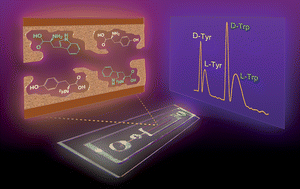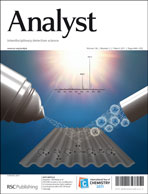Simultaneous multiple enantioseparation with a one-pot imprinted microfluidic channel by microchip capillary electrochromatography
Abstract
A multi-template imprinted microchannel was prepared by a one-pot in situ imprinting process. The imprinted microchannel led to a novel chip-based strategy for simultaneous multiple enantioseparation. The one-pot imprinting process formed a multi-template imprinted porous thin layer (about 2 μm) on the inner wall of the capillary, which was characterized by


 Please wait while we load your content...
Please wait while we load your content...